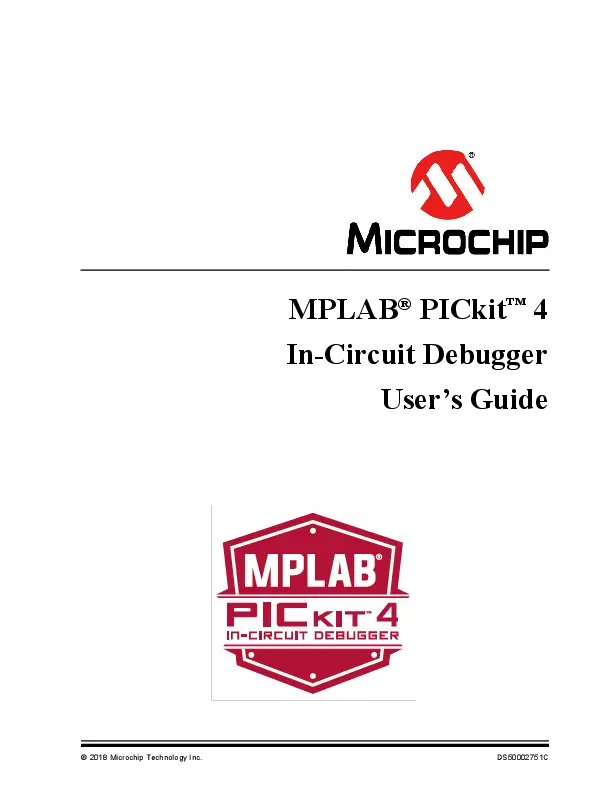Product Overview
Microchip's PICkit 3 In-Circuit Debugger/Programmer is a low-cost hardware tool designed for debugging and programming microcontrollers with Flash memory. It offers efficient in-circuit debugging capabilities, minimizing the need for additional hardware.
- Low cost of ownership.
- Minimal additional hardware required for debugging.
- No expensive sockets or adapters needed.
The PICkit 3 supports reprogramming of PIC microcontrollers and is primarily intended for development purposes, not production programming.
It integrates with the MPLAB X Integrated Development Environment (IDE) for debugging and programming PIC® and dsPIC® Flash microcontrollers. Connection to the host PC is via a full-speed USB interface, and connection to the target is through a Microchip debug (RJ-11) connector.
Header Information
For specific 8-, 14-, and 18-pin devices, small header boards with a special MCU are utilized for debugging. These boards provide extra pins for PICkit 3 communication, allowing access to all pins for application use. The header board is not required for programming but is essential for debugging these devices. Refer to the "Header Specification" document for details.
Documentation & Software
Access essential documentation and software for the PICkit 3:
- MPLAB X IDE Release Notes
- MPLAB X - Using PICkit 3 In-Circuit Debugger Poster
- Emulation Extension Pak (EEP) and Emulation Header User Guide
- PICkit 3 In-Circuit Debugger/Programmer User's Guide
- Processor Extension Pak and Header Specification
- ETN 32 PICkit 3 Operation at Low Voltage - Modification
- Transition Socket Specification
For older software versions, please visit the Microchip archives.








